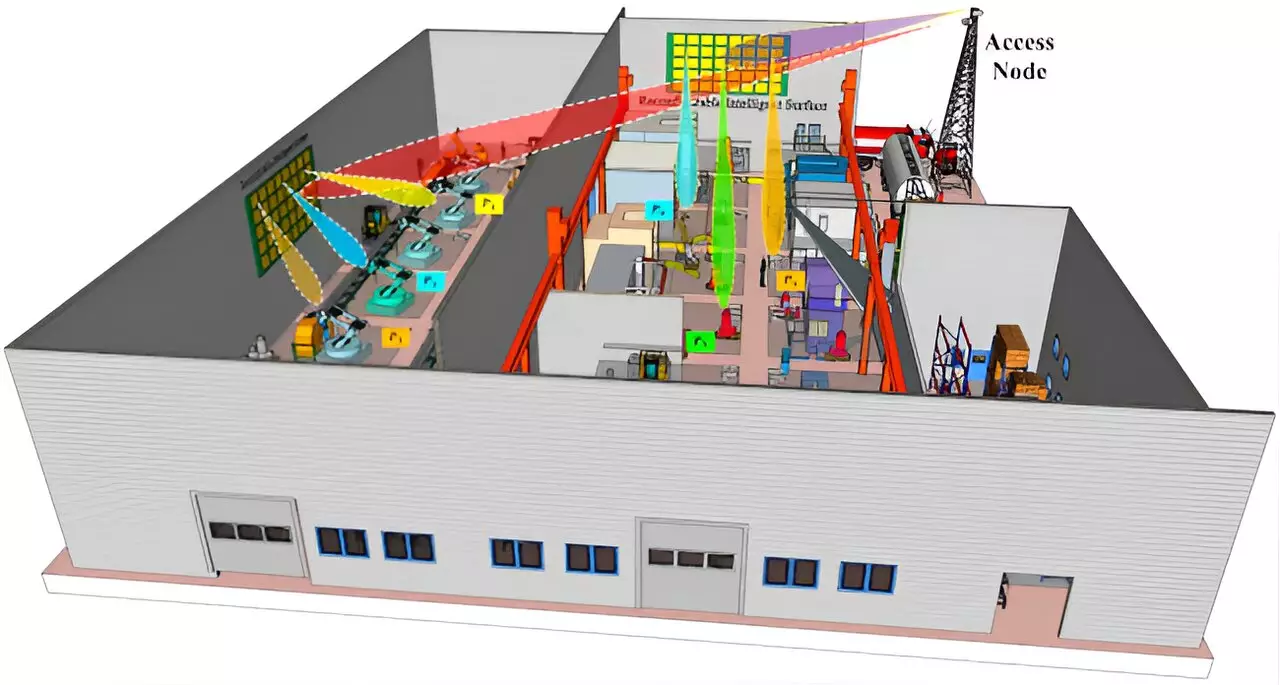In a groundbreaking research study led by engineers from the University of Glasgow, along with colleagues from the U.K. and Australia, a significant breakthrough has been made in the realm of wireless communications. The development of Reconfigurable Intelligent Surfaces (RIS) has the potential to revolutionize the way we pinpoint the locations of people and objects indoors. Traditional positioning technologies like GPS often struggle to perform effectively in indoor environments due to signal interference caused by thick walls and other electronic devices. RIS technology, however, offers a solution to this longstanding problem by using programmable elements to manipulate electromagnetic waves and improve the performance of wireless communications in indoor spaces.
RIS takes the form of flat surfaces that can be placed on walls and ceilings indoors. These surfaces have the ability to intercept incoming wireless signals and intelligently reflect, redirect, and focus them as needed to enhance performance. By being aware of the communications signals being transmitted and received by devices like mobile phones, RIS can precisely locate the device and its user. This opens up a wide range of potential applications, including enhancing call quality by directing signals directly to mobile phones’ antennae, regardless of their location indoors. The integration of RIS technology into existing and future communications networks, such as 5G and 6G, could greatly improve indoor location-finding capabilities.
To explore the potential of RIS technology in improving indoor location accuracy, researchers at the University of Glasgow set up a 1.3m-square RIS with 4,096 elements in a controlled environment. They conducted experiments using two universal serial radio peripherals, one as a transmitter and the other as a receiver. Through a series of tests involving different machine learning algorithms, the researchers were able to analyze the unique “fingerprints” of the optimized wireless signals produced by the RIS at various locations. One algorithm stood out by accurately determining the receiver’s location 82.4% of the time, showcasing the technology’s potential for precise indoor localization tasks.
The research conducted by the team at the University of Glasgow highlights the versatility and potential of RIS technology in shaping and directing wireless signals for a variety of applications. As RIS devices continue to evolve and become more integrated into communications networks, the possibilities for utilizing this technology are endless. From improving crowd management at public events to enabling better tracking of inventory in warehouses, RIS technology has the capacity to revolutionize the way we interact with wireless devices in indoor environments. This work represents a significant milestone in solving complex localization problems and paves the way for a future where indoor wireless communications are more efficient and accurate.
The development of Reconfigurable Intelligent Surfaces represents a major breakthrough in the field of wireless communications. The ability to manipulate electromagnetic waves to enhance indoor location accuracy has the potential to reshape how we use wireless devices in various settings. By improving the performance of wireless signals indoors, RIS technology opens up a myriad of opportunities for applications across different industries. As researchers continue to push the boundaries of this technology, we can expect to see even more innovative solutions that will transform the way we navigate and communicate in indoor spaces.


Leave a Reply